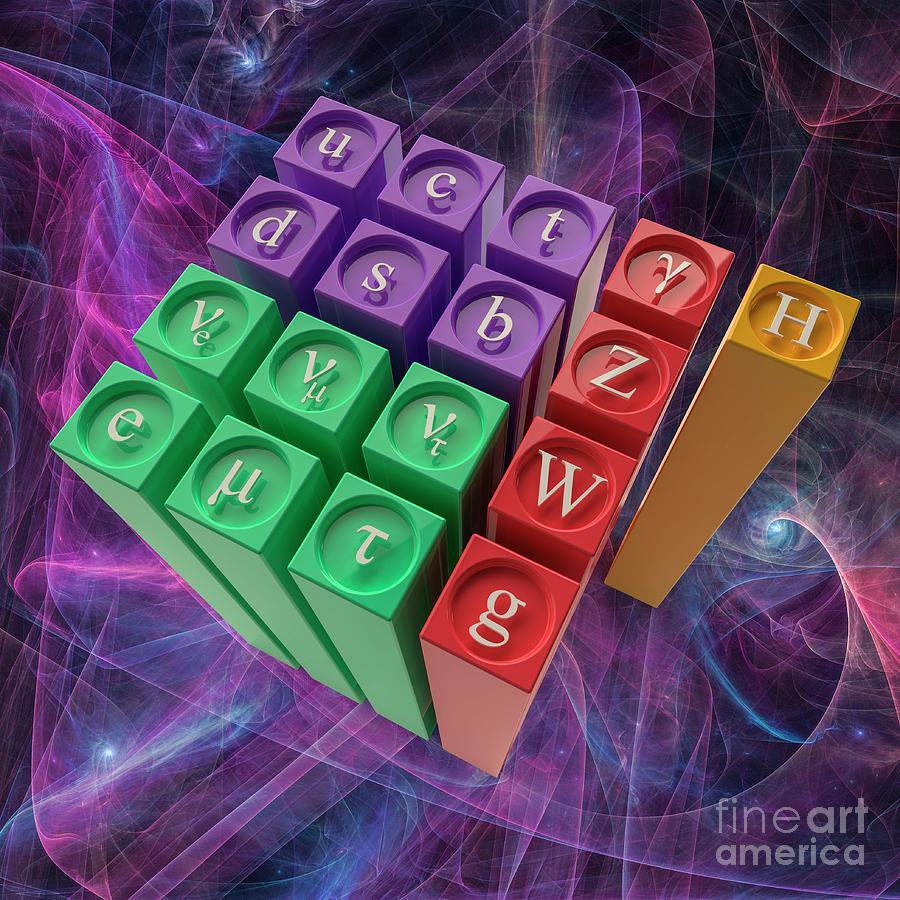


The Standard Model is a paradigm of a quantum field theory for theorists, exhibiting a wide range of phenomena, including spontaneous symmetry breaking, anomalies, and non-perturbative behavior. Each group contains six particles, segregated into three pairs or 'generations', according to their mass and stability. It is astounding how natural phenomena, in all their complexity, can be summarised by a single principle the gauge principle and described by a compact set of equations. The most fundamental particles of matter can be divided into two basic groupsquarks and leptons. The Standard Model of particle physics is a superb monument attesting to the inner beauty of nature and the power of human logical deduction. But the Lego analogy misses some key elements. The development of the Standard Model was driven by theoretical and experimental particle physicists alike. Every time physicists find a new particle, the Standard Model gets one step closer to becoming a Super Model. While most ordinary people probably have never heard of it, the Standard Model explains the reality around us at the tiniest, most basic level. So far, the Standard Model is research’s best attempt to explain the existence, properties, and behavior of these particles. The Standard model is like a collection of Lego bricks that piece together according to certain rules to make up basic stuff like atoms. It also does not incorporate neutrino oscillations and their non-zero masses. The model does not contain any viable dark matter particle that possesses all of the required properties deduced from observational cosmology.
#Standard model particles full#
For example, it does not fully explain baryon asymmetry, incorporate the full theory of gravitation as described by general relativity, or account for the universe's accelerating expansion as possibly described by dark energy. The theory is commonly viewed as describing the fundamental set of particles the leptons, quarks, gauge bosons and the Higgs boson. Thus it is unknown whether it is composed of other particles. This article describes the mathematics of the Standard Model of particle physics, a gauge quantum field theory containing the internal symmetries of the unitary product group SU (3) × SU (2) × U (1). It falls short of being a complete theory of fundamental interactions. In particle physics, an elementary particle or fundamental particle is a particle whose substructure is unknown. Although the Standard Model is believed to be theoretically self-consistent and has demonstrated huge successes in providing experimental predictions, it leaves some phenomena unexplained.


 0 kommentar(er)
0 kommentar(er)
